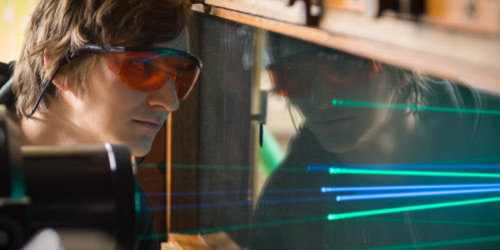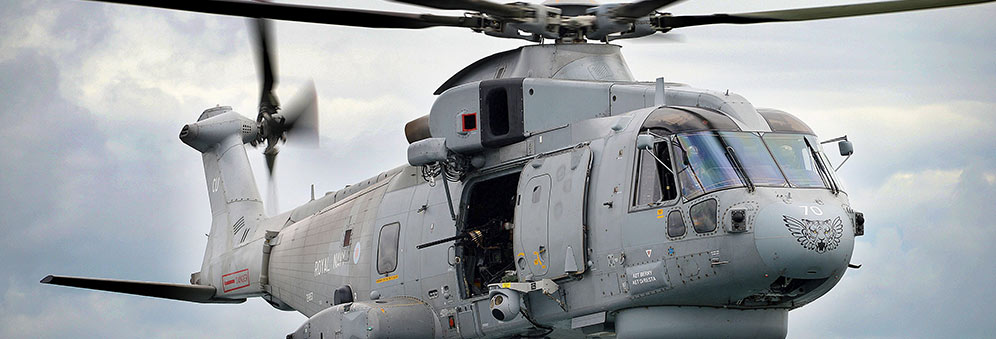Numerical models make for smoother helicopter rides
Making aircraft wings and helicopter rotor blades lighter, more efficient and with fewer fatigue-inducing vibrations.
It’s hard to resist the urge to look to the skies when a helicopter is flying past. That loud, distinctive thud from the rotor blades reflects the powerful lift needed to get a helicopter off the ground – but also indicates the kind of stresses that blades put on the rotor hub and the rest of the airframe.
Resonant modes
Weaver says that the helicopter maker AgustaWestland approached the Bristol team when developing new blades for its EH101 helicopters, also known as Merlins.
Based on advanced, high-stiffness materials like carbon-fibre reinforced plastic (CFRP), honeycomb structures and polymeric foams, these “BERP IV” (BERP stands for British Experimental Rotor Programme) blades were intended to increase both helicopter speed and lifting capability.
However AgustaWestland’s engineers found that the blades, which featured a more accentuated “twist” and a different shape at the tip, generated large vibratory forces. “There were two resonant vibrational modes very close to each other,” Weaver explains. “This caused the helicopter to roll, making it more difficult to control.”
Part of the issue was that standard modelling treated blades like simple, one-dimensional structures - rather like pencils. That simplistic approach could not predict their precise behaviour.
New models - new blades
Along with PhD student Stuart Lemanski, Weaver developed a new model based on some fundamental concepts of structural engineering. They included the strains generated by sub-structures within the blades, and took into account the twisting behaviour that could be induced by using novel composite layup directions for the top and bottom structural members in the blade design.
When incorporated into new blades by AgustaWestland, this method reduced the vibratory control loads. Weaver says that the new blades looked just like the old ones to the untrained eye, but their CFRP elements had been re-oriented.
These materials are stiffer along the direction of the fibre, so that when they are placed at an angle to the blades axis, they produce a coupling between blade bending and torsion (ie. twisting motions). In this particular case the coupling between blade flapping and twisting was used to reduce control loads, but the technology could also reduce some of te other vibratory forces that the rotor passes into the airframe.
The benefits to AgustaWestland have been substantial. The new blades could be fitted to the EH101 with the rotor hubs and airframes now experiencing no extra vibratory forcing. It has since made 85 of the new blades for helicopters where a heavy lift capacity was seen as critical.
Lighter Airbus wings
It isn’t just helicopter blades that have benefited. Airbus also partners ACCIS, and the Weaver group's numerical modelling approaches have proved highly influential to the design of both its A380 and A350 aeroplanes. For the A380 wings, Airbus initially wanted to reduce weight by using a combination of aluminium – for the sections closest to the fuselage, on which jet engines would hang - and lighter, stiffer composites out to the wing tip.
The Bristol team’s analysis showed very clearly that this was not a good idea. Aircraft wings are subject to huge temperature changes and for the hybrid design proposed, the models predicted massive stresses and rapid fatigue on the joints between the metal and composite elements of the A380’s wings.
Since then, aeroplane design has moved on, and the newer Airbus A350 and A400M military aircraft both use far more composite material. Based on the Bristol team’s methods, the weight of each A350 and A400M wing has been cut by 10 kilos, delivering an estimated £14 million in operational savings thanks to lower fuel costs, as well as lower emissions.
Related research groups
 Study Aerospace Engineering
Study Aerospace Engineering
Develop solutions to real-world challenges alongside industry partners.
